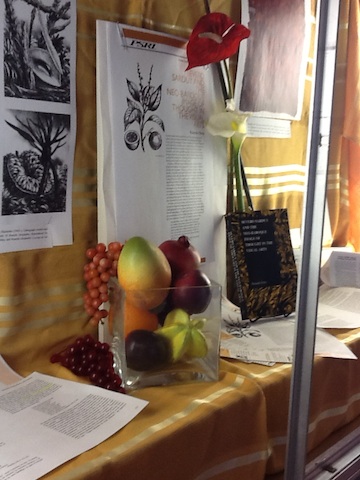Severo Sarduy and the Neo-Baroque Image of Thought in the Visual Arts
Rolando Pérez
Severo Sarduy never enjoyed the same level of notoriety as did other Latin American writers like García Márquez and Vargas Llosa, and his compatriot, Cabrera Infante. On the other hand, he never lacked for excellent critical interpretations of his work from critics like Roberto González Echevarría, René Prieto, Gustavo Guerrero, and other reputable scholars. Missing, however, from what is otherwise an impressive body of critical commentary, is a study of the importance of painting and architecture, first, to his theory, and second, to his creative work.
In order to fill this lacuna in Sarduy studies, Rolando Pérez’s book undertakes a critical approach to Sarduy’s essays—Barroco, Escrito sobre un cuerpo, “Barroco y neobarroco,” and La simulación—from the stand point of art history. Often overlooked in Sarduy studies is the fact that the twenty-three-year-old Sarduy left Cuba for Paris in 1961 to study not literature but art history, earning the equivalent of a Master’s Degree from the École du Louvre with a thesis on Roman art. And yet it was the art of the Italian Renaissance (e.g., the paintings as well as the brilliant and numerous treatises on linear perspective produced from the fifteenth to the sixteenth century) and what Sarduy called the Italian, Spanish, and colonial Baroque or “Neo-Baroque” visually based aesthetic that interested him and to which he dedicated so many pages.
In short, no book on Sarduy until now has traced the multifaceted art historical background that informed the work of this challenging and exciting writer. And though Severo Sarduy and the Neo-Baroque Image of Thought in the Visual Arts is far from being an introduction, it will be a book that many a critic of Sarduy and the Latin American “baroque” will consult in years to come.
“This is an important study of one of the most challenging writers in Caribbean literature. … The author approaches Sarduy from the perspective of the plastic arts and illuminates the philosophical relationship between Sarduy's works and contemporary critical thought.” —Ramón E. Soto-Crespo, University of Buffalo SUNY
"A Sarduy specialist, Pérez has published his most thoroughgoing work to date on one of Latin America's most intriguing, if at times impenetrable intellectuals. … Sarduy's Neobaroque imaginary might helpfully promp new inquiry into the relationship between the writers of the literary Boom and the artists who worked in their midst." —Abigail McEwen, Revista Hispánica Moderna 67.1 (2014): 109-16
“Pérez realiza incisivas e inteligentes lecturas de Sarduy, que abren y sugieren nuevas vías de investigación y exploración. Un libro, en resumen, bienvenido, que, como aspira Pérez (p. 205), ciertamente habría con creces satisfecho al igual de minucioso y barroco autor cubano.” —Eloy E. Merino, Hispania 96.3 (Sept. 2013): 586-87.
“… resalta la centralidad que tiene la imagen en el pensamiento y en la obra de Severo Sarduy.” —Jorge Brioso, Arizona Journal of Hispanic Cultural Studies 17 (2013): 267-68.
“… a welcome addition to Sarduy Studies, especially as it looks at texts of Sarduy’s that have rarely, if ever, been analyzed by critics. The goal of Pérez’s study is to determine how the image ‘functions as the axis of Sarduy’s theory’ (p. 2) … the overall thrust of Pérez’s book [is] that Sarduy’s poetry is inextricably related to his theory of literature, science, and art.” —Carlos Riobó, CiberLetras No. 29 (Dec. 2012). Web. http://www.lehman.cuny.edu.ciberletras/v29/riobo.html. Accessed 25 Sept. 2014
Rolando Pérez, Hunter College, CUNY, has published in a variety of disciplines, ranging from philosophy and literary criticism to poetry and fiction. Some of his books include Severo Sarduy and the Religion of the Text (1988), On An(archy) and Schizoanalysis (1990), and The Linings of Our Souls: Excursions into Selected Paintings of Edward Hopper (2003). He is also the author of numerous essays on Severo Sarduy, José Asunción Silva, César Vallejo, Alejandra Pizarnik, Octavio Paz, and others. Selections from his creative work appear in The Norton Anthology of Latino Literature (2010).
PSRL 53. 2011. xii, 320 pp. ISBN 978-1-55753-604-4 Paper $45.00

Display Case in Stanley Coulter Hall
the week of January 25-February 1, 2012.